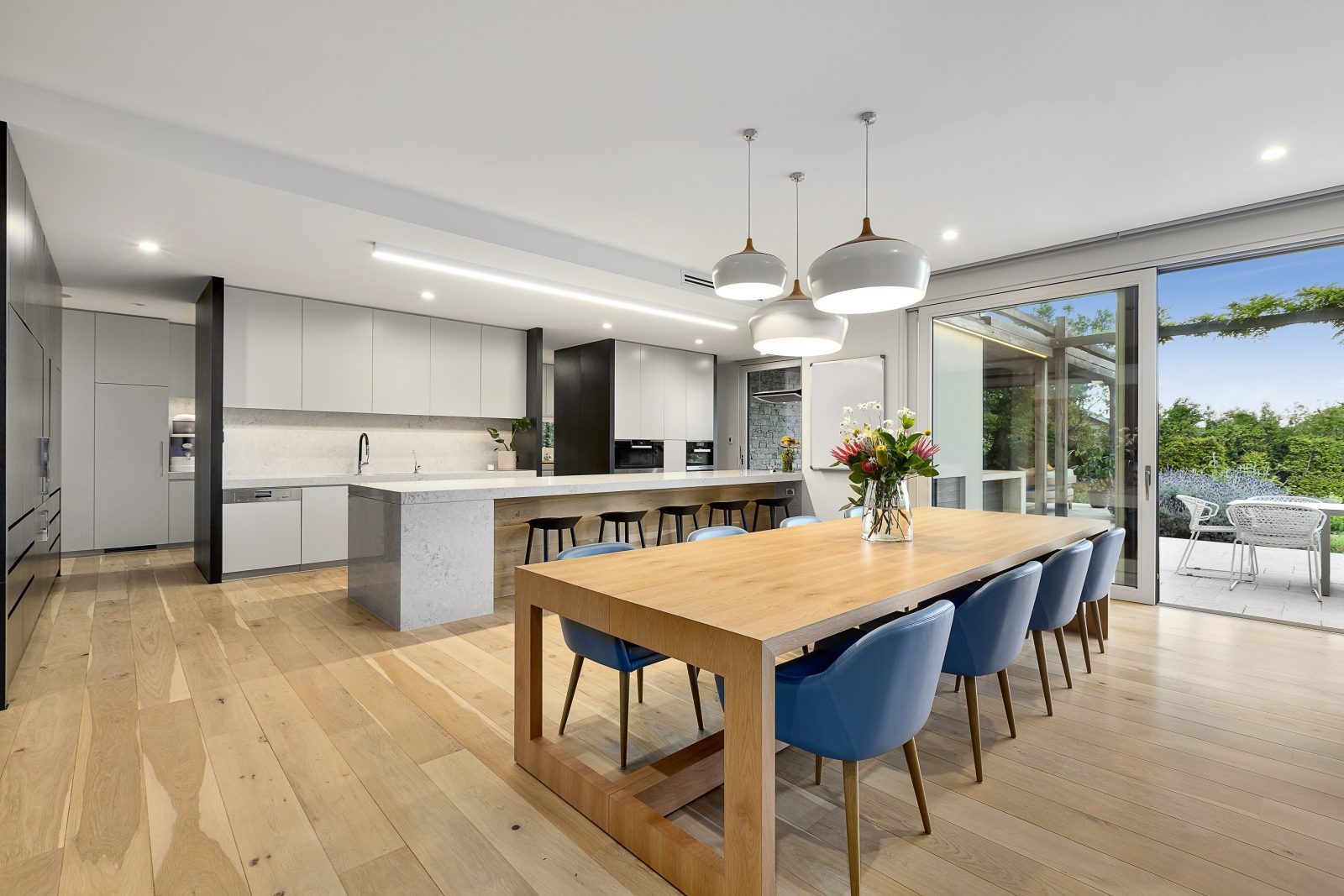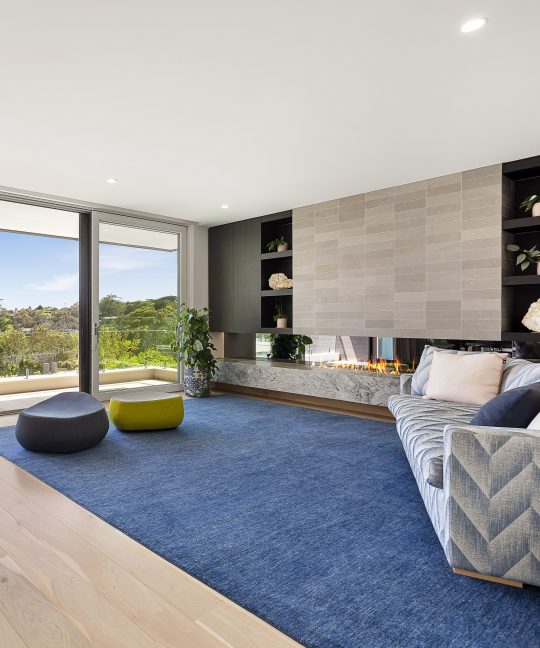Canadian Bay Road

The first residence in Victoria designed to the German Passivhaus criteria, setting new benchmarks for energy conservation practice.
Canadian Bay Road is a large luxury residence setting a new benchmark in energy conservation.
Australian energy assessment guidelines largely disregard key areas of energy loss: air leakage and conduction of energy through ‘bridges’ in the building structure. The Passivhaus method applied in this Canadian Bay Residence not only requires much higher insulation levels, but carefully addresses air leakage with an air tight envelope. Thermal bridges are also carefully assessed and where possible eliminated. This results in a house that is around two and a half times more energy efficient than current best practice, and unlike current practice, energy performance is verified both by virtual modelling and post construction testing. This testing includes pressure testing to measure air leakage rates: the required International rate is one sixth of that required under typical Australian practice. Naturally, the emphasis is on the quality of the builder’s processes, and a systematic approach to construction.
An airtight building requires a systematic approach to ventilation for occupant health and moisture control. Canadian Bay Road is a rare instance in Australia of the use of energy recovery ventilation. All supply air is carefully balanced against exhaust air and the energy (heat in winter, cool in summer) in the exhaust air is put into the supply air at an efficiency approaching 90%, using a heat exchanger. This means that there is no return air. Pathogens and dust that are normally recirculated through the interior of a house by conventional air conditioning are expelled so that all supply air is fresh and micro filtered. This is a method typically used in houses for persons susceptible to infection, hayfever and asthma sufferers.
With a low base energy consumption, the addition of solar systems for electricity generation, hot water supply and pool heating were a logical addition, and these systems address a much higher percentage of the base load of the house than would normally be achieved.












